Top 19 Free Qualitative Data Analysis Software
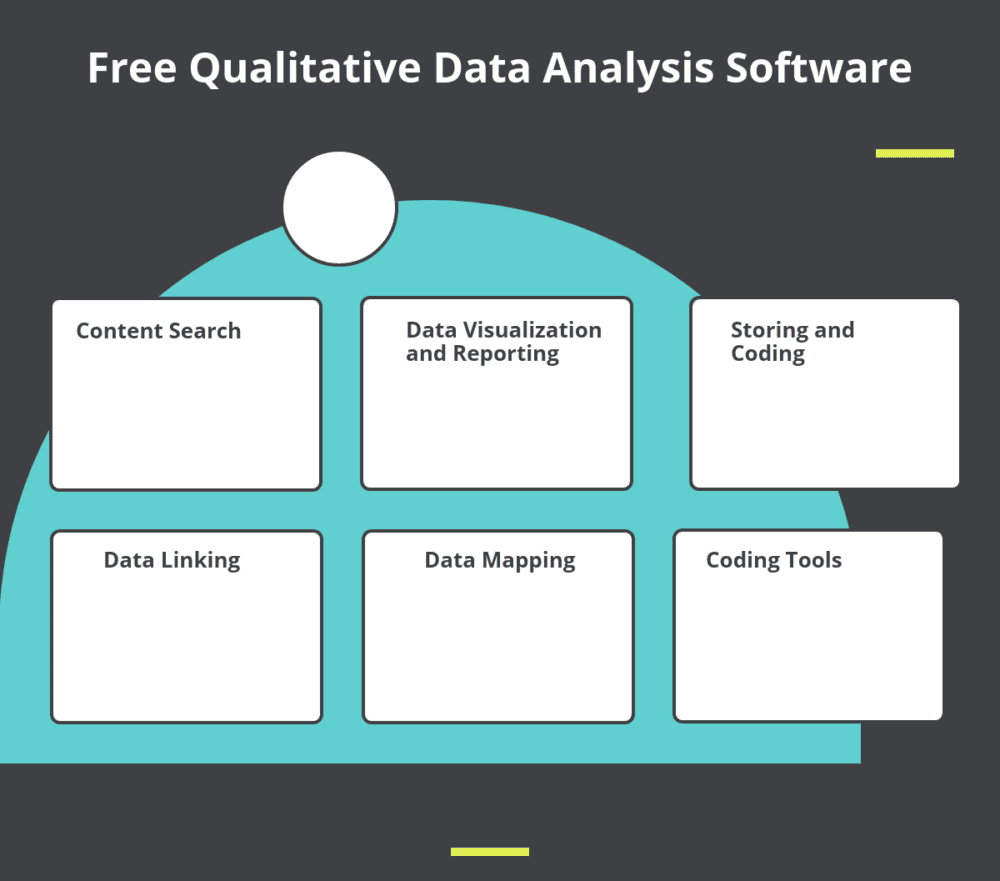
Many companies deal with huge volumes of qualitative data on a daily basis. This kind of data may not be useful unless data analysts use the right data tools to analyze it. For this reason, most modern organizations use software to analyze qualitative data.
In fact, the use of qualitative data analysis software is a must because it’s hard to handle qualitative data in different formats without the help of a computer program.
Qualitative data analysts use software to do collaborated research, ensure research credibility and validity, perform complex data analysis tasks, organize large volumes of qualitative data, and create reports based on the analyzed data.
With the right software, companies can also store their qualitative data in different formats depending on their needs. The best qualitative data analysis software can handle data in different formats including text, videos, audio files, and images.
What are Qualitative Data Analysis Software?
Qualitative Data Analysis Software provides tools to assist with qualitative research such as transcription analysis, coding and text interpretation, recursive abstraction, content analysis, discourse analysis, and grounded theory methodology. The data types in qualitative research includes face to face interview, telephone interview, email interview, internet interview, focus groups, nominal groups, Delphi groups, observation notes and document collation.
CAQDAS is Computer assisted qualitative data analysis. Computer assisted qualitative data analysis (CAQDAS ) software has features for coding tools, linking tools, mapping or networking tools, query tools and writing and annotation tools.
Qualitative data analysis software is a type of software that allows data analysts to perform all kinds of qualitative data analysis tasks. For instance, it allows users to analyze transcripts, interpret text, code text, and create reports. The software consists of tools for organizing and analyzing large volumes of text and other forms of qualitative data to ensure effective data management. Business users, researchers, and other users can utilize these tools to conduct research and draw conclusions after analyzing qualitative data. The software uses different research methods such as qualitative content analysis, Grounded Theory, discourse analysis, and mixed methods analysis.
Qualitative data analysis applications are used in most fields including marketing, tourism, music, sociology, theology, market research, geography, psychology, political science, and healthcare. People in this industries use these applications to analyze data from focus groups and interviews. The software can also analyze data from written documents and observational notes.
What are the features of Qualitative Data Analysis Software?
- Content Search: This feature allows users to conduct qualitative research using the research methods mentioned in the above section. The most effective software tools use a wide range of search methods to gather qualitative data. They can extract content from video sources, audio files, text documents, graphics, and other sources of qualitative data.
- Data Visualization and Reporting: The best qualitative data analysis software programs allow users to visualize all forms of electronic data including interviews, surveys, pictures videos, and bibliographical data. Most qualitative data analysis applications allow data analysists to create reports depending on the needs of the organization. Even non-technical users can create line charts, scatter plots, KPI gauges, and geographical maps.
- Storing and Coding: QDA software also includes coding tools that allow data analysts and other software users to perform different forms of coding such as keyword and text coding. They allow you to systematically code data in different formats and categories.
- Data Linking: This feature allows users to form clusters, networks or categories of data.
- Data Mapping: QDA software makes it possible to map data to support theories and depict findings.
Some of the benefits of Qualitative Data Analysis Software includes:
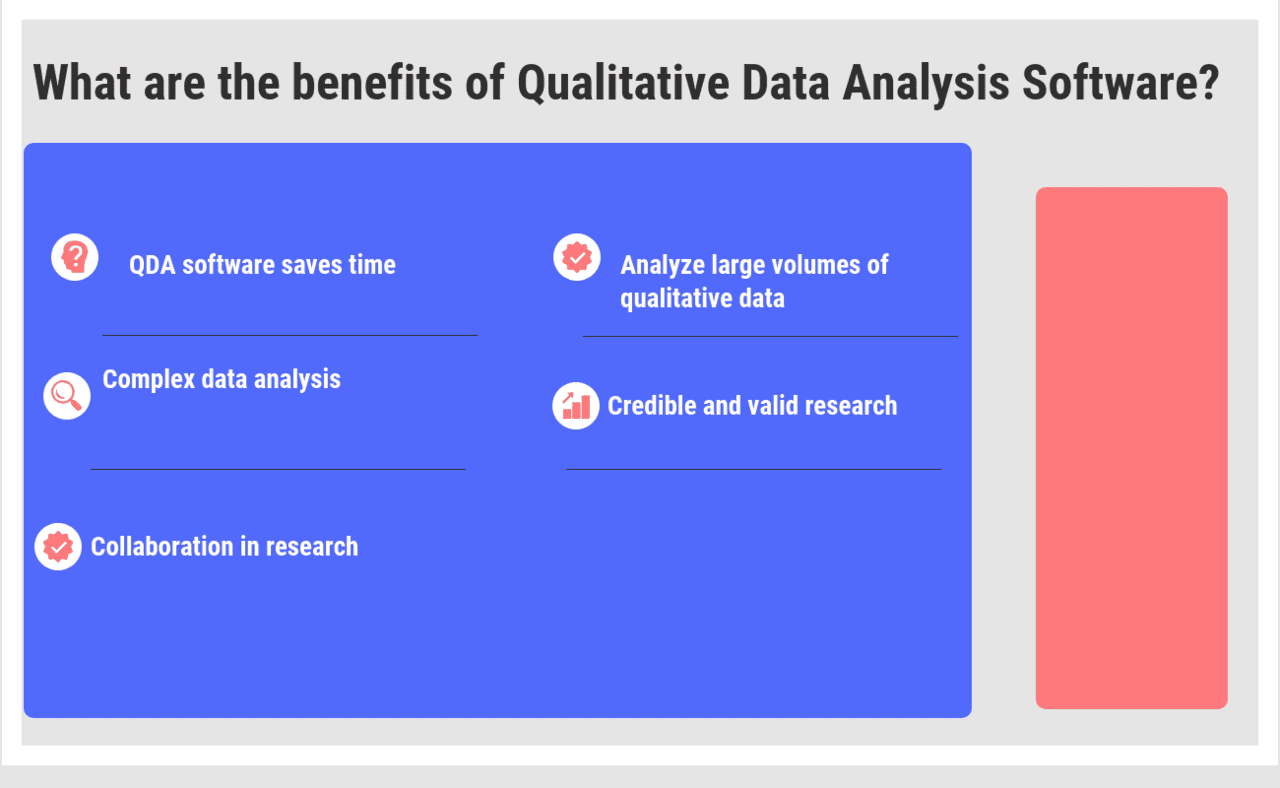
What are the benefits of Qualitative Data Analysis Software?
- QDA software saves time
- The software can analyze large volumes of qualitative data
- Complex data analysis
- Credible and valid research
- Collaboration in research
Top Free Qualitative Data Analysis Software
Coding Analysis Toolkit
CAT is a free service originally developed by the Qualitative Data Analysis Program (QDAP).Coding Analysis Toolkit (CAT) efficiently code raw text data sets, annotate coding with shared memos, manage team coding permissions via the Web. Create unlimited collaborator sub-accounts, assign multiple coders to specific tasks, easily measure inter-rater reliability, adjudicate valid & invalid coder decisions, report validity by dataset, code or coder, export coding in RTF, CSV or XML format and archive or share completed projects .
• Simple / Touch Screen Coding
• Adjudication Process/Post-Adjudication Statistics
• Web Browser Oriented Coding
• Simple Layout / User Interface
• Reliability Analyses
• Kappa Measurement Tool
Free
• Simple / Touch Screen Coding
• Adjudication Process/Post-Adjudication Statistics
• Web Browser Oriented Coding
• Efficiently code raw text data sets
• Annotate coding with shared memos
• Manage team coding permissions via the Web
General Architecture for Text Engineering – GATE
General Architecture for Text Engineering - GATE : GATE (General Architecture for Text Engineering) is a Java suite of tools used for all sorts of natural language processing tasks, including information extraction in many languages. The Text Analytics software was developed at the University of Sheffield beginning in 1995. GATE has grown over the years to include a desktop client for developers, a workflow-based web application, a Java library, an architecture and a process. GATE includes components for diverse language processing tasks, such as parsers, morphology, tagging, Information Retrieval tools, Information Extraction components for various languages, and many others. GATE…
• Capable of solving almost any text processing problem
• Creating robust and maintainable text processing workflows
• In active use for all sorts of language processing tasks and applications
Free
• Capable of solving almost any text processing problem
• Creating robust and maintainable text processing workflows
• In active use for all sorts of language processing tasks and applications
• Comprehensiveness
• Scalability
• Openness, extensibility and reusability
General Architecture for Text Engineering – GATE
FreeQDA
FreeQDA is a software for professional qualitative research data analysis, such as interviews, manuscripts, journal articles, memos and field notes.
•Qualitative research data analysis
•Interviews, manuscripts, journal articles, memos and field notes
Free
•Qualitative research data analysis
•Interviews, manuscripts, journal articles, memos and field notes
QDA Miner Lite
QDA Miner Lite is a free computer assisted qualitative analysis software, which can be used for the analysis of textual data such as interview and news transcripts, open-ended responses, etc. as well as for the analysis of still images. It offers basic CAQDAS features such as importation of documents from plain text, RTF, HTML, PDF as well as data stored in Excel, MS Access, CSV, tab delimited text files,importation from other qualitative coding software such as Altas.ti, HyperResearch, Etnograph, from transcription tools like Transana and Transcriber as well as from Reference Information System (.RIS) files. It also provides intuitive coding…
• Importation of documents from plain text, RTF, HTML, PDF as well as data stored in Excel, MS Access, CSV, tab delimited text files,
• Importation from other qualitative coding software such as Altas.ti, HyperResearch, Etnograph, from transcription tools like Transana and Transcriber as well as from Reference Information System (.RIS) files.
• Intuitive coding using codes organized in a tree structure.
• Ability to add comments (or memos) to coded segments, cases or the whole project.
• Fast Boolean text search tool for retrieving and coding text segments.
Free
• Code frequency analysis with bar chart, pie chart and tag clouds.
• Coding retrieval with Boolean (and, or , not) and proximity operators (includes, enclosed, near, before, after).
• Export tables to XLS, Tab Delimited, CSV formats, and Word format
• Easy-to-use
• Analysis of transcripts
• Analysis of interviews
TAMS
TAMS stands for Text Analysis Markup System. It is a convention for identifying themes in texts (web pages, interviews, field notes). It was designed for use in ethnographic and discourse research. TAMS Analyzer is a program that works with TAMS to let you assign ethnographic codes to passages of a text just by selecting the relevant text and double clicking the name of the code on a list. It then allows you to extract, analyze, and save coded information. TAMS Analyzer is open source; it is released under GPL v2. The Macintosh version of the program also includes full support…
• PDF coding and analysis support
• Image (jpg, etc.) coding and analysis support
• Improved layout for video coding and analysis
• New icon set
Free
• PDF coding and analysis support
• Image (jpg, etc.) coding and analysis support
• Improved layout for video coding and analysis
• Identify themes in texts
• Assign ethnographic codes to passages of a text
• Allows you to extract, analyze, and save coded information
Qiqqa
Qiqqa is another innovative solution on the market used by academics, researchers, and businesses. It is an essential free research and reference manager that can be used to search for, read, and annotate PDFs. Users can review their work, write up, and create bibliographies instantly. There are four main ways Qiqqa helps users. Qiqqa keeps all of a user’s PDFs secure and makes them instantly accessible and searchable across all their devices. There is no more need for PDFs to litter across a PC. It also allows for automatic identification, tagging, and categorization of PDFs meaning that a user can…
•PDF management
•Automatic duplication detection
•Optical Character Recognition
•Super Tags
•Google-like power
•Premium $ 6.67* /month
•Premium+ $ 41.67* /month
•Automatic duplication detection
•Optical Character Recognition
•Super Tags
• Keep your data organized
• Import all your documents in one go
• Share documents on the web
RQDA
RDQA is a R package for Qualitative Data Analysis, a free qualitative analysis software application (BSD license). It works on Windows, Linux/FreeBSD and Mac OSX platforms. RQDA is an easy to use tool to assist in the analysis of textual data. At the moment it only supports plain text formatted data. All the information is stored in a SQLite database via the R package of RSQLite. The GUI is based on RGtk2, via the aid of gWidgetsRGtk2. It includes a number of standard Computer-Aided Qualitative Data Analysis features. In addition it seamlessly integrates with R, which means that a) statistical…
• Single-file (*.rqda) format, which is basically a SQLite database. Data are stored in UTF-8, so it should be portable
• Organize codes into code categories, which is key to theory building. I deliberately avoid using tree-like categorization
• Organize files into file categories
• Search files by keywords with highlighting of the keyword in the open file.
• Apply attributes to file, which is useful for content analysis
• There is a case category and related attributes of cases, which is a crucial feature in bridging qualitative and quantitative research.
• Search information about a selected case on the Internet via a pop-up menu
• Temporary delete files and codes
• Rename files, codes, code categories, and cases
• Write and organize field work journals
Free
• Import documents from plain text or on-the-fly
• Import PDF highlights which is useful for content management of literature (reliant on rjpod)
• Support non-English documents. Simplified Chinese Character is well-tested under Windows as well as Debian Linux (with locale of zh_CN.UTF-8)
• Apply attributes to files
• Import a batch of text/PDF files on-the-fly
• Use an advanced Graphic user interface
ConnectedText
ConnectedText is one of the most complete solutions for a desktop wiki. ConnectedText is the perfect tool for a user to consolidate all their "stuff" in one easily accessible place. It has powerful tools to collect, connect, understand and retrieve this information. It is easy to import one’s information into ConnectedText. And should a user ever decide to discontinue use of ConnectedText, their information can be easily and reliably exported to text or HTML so that a user is not locked into a proprietary data scheme. ConnectedText is much more than a personal information system. It is designed for storing,…
•Automatic creation of table of contents for a topic
•Tables and bulleted lists
•Dictionary lists
•Support for GIF, PNG, JPEG and BMP images, with resizing and positioning (see screen shot)
•Support for Flash animations and AVI, MP4, WMV and MPEG movies.
•Five levels of headers which can be collapsed/expanded.
•Text effects: bold, italic, underwrite, strike through,
•Paragraph indenting
•URL, mail and file linking
•Allows inclusion of a topic inside other, even from other projects
•Links between projects
•Anchor links
•Named blocks
•Automatic URL detection
•Special category topics
•Mathematical formulas rendered using LaTeX (see screen shot)
•Rename or delete any topic with automatic change of references
•Inline styles to improve text appearance
•Topics can have an associated icon
•Topics can be locked to prevent editing
• USD 39.95
•Special category topics
•Mathematical formulas rendered using LaTeX (see screen shot)
•Rename or delete any topic with automatic change of references
• Get full support of Unicode
• Create any kind of database
• Consolidate all your data in one easily accessible place
LibreQDA
LibreQDA is a Qualitative Data Analysis tool that has been developed alongside with the Universitat Autónoma de Barcelona and the Universidad de la República Oriental del Uruguay. LibreQDA is what is commonly known in the psychology area as Computer Assisted Qualitative Data Analysis Software (CAQDAS). This tool allows the users to log in, import documents from different formats and assign valuable metadata to them. Once documents are opened, the user can select portions of them, tag them and codify them using a hierarchic coding system. Using its own query engine LibreQDA can perform advanced queries in order to get relevant…
• Log in, import documents from different formats
• Assign valuable metadata
• Hierarchic coding system
• LibreQDA’s own query engine
Free
• Log in, import documents from different formats
• Assign valuable metadata
• Hierarchic coding system
QCAmap
QCAmap is an open access web application for systematic text analysis in scientific projects based on the techniques of qualitative content analysis. QCAmap can be used within research projects in areas of study of Psychology, Sociology, Education, Economics, Linguistic Sciences, to analyze small and large amounts of any text material and images coming from interviews, group discussions, observation protocols, documents, open-ended questionnaire items and others. Qualitative Content Analysis is a strict procedure that is guided by rules containing qualitative steps (assignment of categories to text passages and images) and quantitative steps (analysis of category frequencies).
•Analyze small and large amounts of any text material and images
•Interviews, group discussions, observation protocols, documents
•Rule-guided procedure containing qualitative steps
•Assignment of categories to text passages and images
•Analysis of category frequencies
Registration required, no pricing provided
•Analyze small and large amounts of any text material and images
•Interviews, group discussions, observation protocols, documents
•Rule-guided procedure containing qualitative steps
•Versatile in use
•Easy to use
•Can be used with different forms of text
Visão
Visão is one of the most effective computer-aided text analysis software on the market today. Visão is a powerful desktop software that allows users to process and analyze large text data. With regard to a user’s aims and plans, this application makes possible to design fully-customizable flows to manipulate and transform their data into a desired shape or to perform a statistical analysis. The tool is mainly focused on computer-aided text analysis, and that is why it supports various encodings, dictionary-building, regex patterns, and many other important features. The platform also provides users with an easy way to quantify the…
•Import text data from a single file or process a whole directory.
•It supports plain text files and csv
•It reads a text encoded in various character encodings
•It customizes a parsing process
Free version offered but there is no pricing
•Import text data from a single file or process a whole directory.
•It supports plain text files and csv
•It reads a text encoded in various character encodings
• Easily import text data from a single file or process a whole directory
• Process and analyze large text data
• Recognize and quantify tokens
Aquad
AQUAD 7 is open-source freeware software that was originally developed in the tradition of qualitative coding and qualitative content analysis. AQUAD 7 allows to trace back and explain each code based on the original data material. Hypotheses can be tested directly on the source material. This avoids extra and sometimes unnecessary work like transcriptions (audio, video) or paraphrasing. The quality does not suffer by using this method – quite the opposite: Paraphrases must be seen as an act of interpretation and therefore they cause a certain level of uncertainty in an analysis. If users code a paraphrase, users are actually…
• Content analysis without transcriptions
• Content analysis of texts directly on the screen.
• Coding by clicking in an automatically created register of codes (master code list).
• Variable length of codes, maximum 60 characters.
• Practically unlimited memos; text segments, part of other memos, saved findings, etc.
• Analysis separately by speakers in audio-, video-, textfiles.
• Word analysis:
• Table analysis on one, two or three levels of criteria (that is, hierarchical order of criteria).
Free
• Analysis separately by speakers (or any unit like items in questionnaires, etc.) in audio-, video-, textfiles.
• Word analysis: Differentiation of files into single words, analysis with dictionaries of meaning (word catalogs) and speaker codes.
• Table analysis on one, two or three levels of criteria (that is, hierarchical order of criteria).
• Supports multiple data formats
• Supports direct testing of hypotheses
• Foster the transparency of analyses
Weft QDA
Weft QDA is an easy-to-use, free and open-source tool for the analysis of textual data such as interview transcripts, fieldnotes and other documents. This software is offered without any warranty or support. Weft QDA 1.0.1 was developed for Windows XP, but may work on newer versions. Windows users should download this installer which contains everything you need to use Weft. It’s available to download via Softpedia’s Weft QDA page. Unfortunately, Weft QDA 1.0.1 depends on such old versions of system libraries (e.g. GTK) so it is very difficult or impossible to run Weft QDA 1.0.1 on a modern Linux distro.…
• Import plain-text documents from text files or PDF
• Character-level coding using categories organised in a tree structure
• Retrieval of coded text and ‘coding-on’
• Simple coding statistics
• Fast free-text search
• Combine coding and searches using boolean queries AND, OR, AND NOT
• ‘Code Review’ to evaluate coding patterns across multiple documents
• Export to HTML and CSV formats
Free
• Import plain-text documents from text files or PDF
• Character-level coding using categories organised in a tree structure
• Retrieval of coded text and ‘coding-on’
• Import plain-text documents from text files or PDF
• Perform character-level coding
• Easily retrieve coded text
Cassandre
Cassandre is a free collaborative text analysis platform based on semi-automatic labeling, concordance visualization and registry creation. It’s designed to assist researchers in human and social sciences, and it is an interactive tool for qualitative analysis. It’s interactive in a sense that it allows to articulate a corpus of texts and research hypotheses and it’s also translated among users, since it allows different analysts to compare and compare their alternative interpretation of texts. In order to create a corpus or to deposit texts, to read these texts or to associate a corpus with a framework of analysis users interact with…
free collaborative text analysis platform
designed to assist researchers in human and social sciences
allows to articulate a corpus of texts and research hypotheses
interact with Cassandre like with any Internet site.
Cassandre mailing list -receive the announcement of the new features and the tips of the other users
Contact for pricing.
CATMA
CATMA (Computer Assisted Textual Markup and Analysis) is a practical and intuitive tool for text researchers. In CATMA, users can combine the hermeneutic, ‘undogmatic’ and the digital, taxonomy based approach to text and corpora – as a single researcher, or in real-time collaboration with other team members. CATMA’s Analyzer module supports the generation of Wordlists amongst its key automated functions. A wordlist displays all the words contained in users’ text, arranged in alphabetical order or according to their frequency in the text. Users can select an individual word and inspect the different contexts in which it was used in the…
• Support of digital text in almost any language, incl. right-to-left scripts (e.g. Arabic, Hebrew, Japanese)
• Full integration of annotation and analysis functions in a web browser
• Web-based collaboration for easy exchange of documents, annotations, and Tag Types
• Freely definable or pre-defined tags that can also be shared
• Interactive natural-language searches across text, corpora, and annotations
• Automated statistical and non-statistical analytical functions
• Built-in visualization of search results and analyses
• Analysis of complex text corpora in a single step
• Context-sensitive help function, tutorials, user manual, and help desk
Contact for Pricing
• Freely definable or pre-defined tags that can also be shared
• Interactive natural-language searches across text, corpora, and annotations
• Automated statistical and non-statistical analytical functions
Compendium
Compendium is a software tool providing a flexible visual interface for managing the connections between information and ideas. It places few constraints on how users organize material, though many have found that it provides support for structured working for instance, following a methodology or modelling technique. Compendium’s particular interest is in visualizing the connections between people, ideas and information at multiple levels, in mapping discussions and debates, and what skills are needed to do so in a participatory manner that engages all stakeholders. As an open, flexible tool, Compendium has myriad applications for information-intensive, intellectual work. Most of its global…
• Flexible visual interface
• Few constraints
• Managing the connections between information and ideas
• Support for structured working
• Visualizing the connections between people, ideas and information
• Mapping discussions and debates
Contact for Pricing
• Validated in both small and large scale projects
• Manage their personal digital information resources
• Real time capture and integration of hybrid material (both predictable/ formal, and unexpected/informal) into a reusable group memory
ELAN
ELAN is a professional tool for the creation of complex annotations on video and audio resources. With ELAN, a user can add an unlimited number of annotations to audio and/or video streams. An annotation can be a sentence, word or gloss, a comment, translation or a description of any feature observed in the media. Annotations can be created on multiple layers, called tiers. Tiers can be hierarchically interconnected. An annotation can either be time-aligned to the media or it can refer to other existing annotations. The textual content of annotations is always in Unicode and the transcription is stored in…
• Navigate through the media with different step sizes
• Easy navigation through existing annotations
• Waveform visualization of .wav files
• Support for template documents
• Input methods for a variety of script systems
Free
• Multi-tier regular expression search, within a single document or in a selection of annotation documents
• Support for user definable Controlled Vocabularies
• Import and export of Shoebox/Toolbox, CHAT, Transcriber (import only), Praat and csv/tab-delimited text files
Tosmana
Tosmana is a tool for Qualitative Comparative Analysis (QCA). The software can be used for csQCA (Crisp-Set Qualitative Comparative Analysis) and mvQCA (Multi-Value QCA) calculations. The simple way to include data with TOSMANA is to copy data directly from a spreadsheet program. To do so, open the data set in a spreadsheet program. Select all cells with data in the data set and copy. Remember to include variable names in the first row. In TOSMANA, select File>Import from Clipboard in the menu. The data will be loaded to the software and will replace existing data. After the successful import, users…
• Data can now be imported directly from spread-sheet programs by simple Click-and-Paste
• Revised report mode. Reports are shown in a webbrowser by default, but the text window is still available.
• Datafiles are saved as XML files by standard
Free
• Data can now be imported directly from spread-sheet programs by simple Click-and-Paste
• Revised report mode. Reports are shown in a webbrowser by default, but the text window is still available.
• Datafiles are saved as XML files by standard
fs/QCA
Qualitative Comparative Analysis (QCA) is a new analytic technique that uses Boolean algebra to implement principles of comparison used by scholars engaged in the qualitative study of macro social phenomena. By formalizing the logic of qualitative analysis, QCA makes it possible to bring the logic and empirical intensity of qualitative approaches to studies that embrace more than a handful of cases -- research situations that normally call for the use of variable-oriented, quantitative methods. fsQCA makes the following assumptions about the structure of *.csv, *.dat and *.txt data files. First, and most important, fsQCA assumes that the cells in the…
• Character-level coding using codes
•File Editing after coding
•Memos of documents, codes, coding, project, files and more
•Retrieval of coding, and easily return to the original file
•Single-file (*.rqda) format, which is basically a SQLite database.
•Organize codes into code categories, which is key to theory building.
•Search files by keywords with highlighting of the keyword in the open file.
Free
• Character-level coding using codes
•File Editing after coding
•Memos of documents, codes, coding, project, files and more
• Perform both intensive and integrative analyses
• Handle multiple research cases
• Perform multiple comparisons of configurations
You may also like to review the Text Analysis, Text Mining, Text Analytics proprietary software list:
Top software for Text Analysis, Text Mining, Text Analytics
You may also like to review the Text Analysis, Text Mining, Text Analytics freeware/open source list:
Top Free Software for Text Analysis, Text Mining, Text Analytics
You may also like to review the Top Qualitative Data Analysis Software proprietary software list:
Top Qualitative Data Analysis Software
You may also like to review the Top Free Qualitative Data Analysis Software software list:
Top Free Qualitative Data Analysis Software
What are Qualitative Data Analysis Software?
Qualitative Data Analysis Software provides tools to assist with qualitative research such as transcription analysis, coding and text interpretation, recursive abstraction, content analysis, discourse analysis, and grounded theory methodology.
What are the top Free Qualitative Data Analysis Software?
Coding Analysis Toolkit, General Architecture for Text Engineering – GATE, FreeQDA, QDA Miner Lite, TAMS, Qiqqa, RQDA, ConnectedText, LibreQDA, QCAmap, Visão, Aquad, Weft QDA, Cassandre, CATMA, Compendium, ELAN, Tosmana, fs/QCA are some of the Top Free Qualitative Data Analysis Software.




















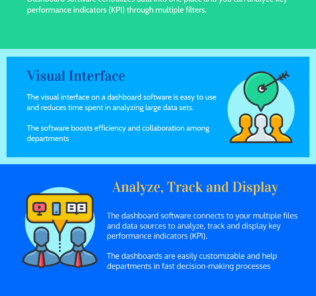
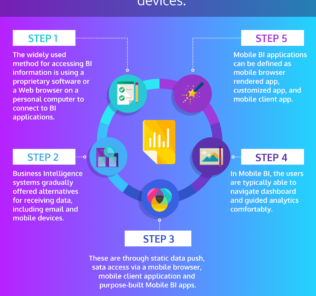

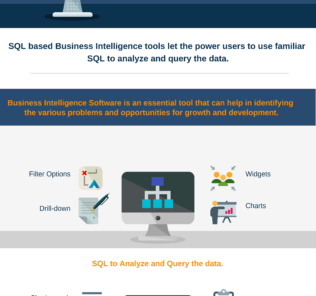
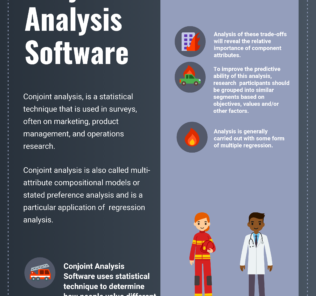
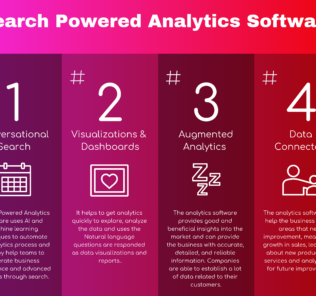




ADDITIONAL INFORMATION
Great article, very informative, thank you
ADDITIONAL INFORMATION
Transana has many advanced features that put it in the top rank of qualitative data analysis software. It started out as sophisticated software available at no cost to academic researchers, but has not been available for free download since 2007. It is used by people in a broad number of research fields all over the world, and currently has prompts in ten languages. The updated website is http://www.transana.com
ADDITIONAL INFORMATION
If I could engage in a little self-promotion, I’m working on a free toolkit called NVivotools for moving data between NVivo files and a free and open format based on SQLite. From there you can easily access it using your favorite computer methods in Python, R or whatever you like. You can also move your research back into NVivo format to continue using NVivo’s features. Some uses for these tools include importing data from external sources, automated coding, and customized reporting. Not to mention the principle of keeping your data in a format that you can understand, not in NVivo’s opaque and proprietary format.
NVivotools is available at https://github.com/BarraQDA/nvivotools or try it out (for free of course) at http://wooey.barraqda.org/
ADDITIONAL INFORMATION
Together with Prof. Philipp Mayring we developed an open access web-based software tool named QCAmap (www.qcamap.org), which is directly based on techniques of Qualitative Content Analysis (Mayring, 2010). Those techniques aim at a systematic, rule-guided and inter-subjective analysis of textual material (interview and group discussion transcripts, open questionnaire material, observation protocols and field notes, documents and files).
The software program leads, as an interactive tool, through the several steps of su,,arizing, inductive category development and deductive category assignment. QCAmap presents pre-structured templates following the several steps of analysis. It is combined with explicit descriptions of the procedures and their theoretical background. QCAmap not only allows to categorize textual material but also provides opportunities to analyze Images (which can be uploaded in .jpg, .gif or .png.
The program as well as supporting material (e.g.introduction, handbook available shortly) are approachable in open access (www.qcamap.org). Further information on Qualitative Content Analysis is to be found on http://www.qualitative-content-analysis.org/ in German and English.
ADDITIONAL INFORMATION
Another self-promotion here. TAMS Analyzer offers qualitative coding and analysis of text, pdf, images, video/audio. It is os x only (that’s it’s main drawback). It does have a multiuser version that facilitates sharing of documents through a mysql server.
ADDITIONAL INFORMATION
I think that the QualCoder should be listed here. The best open-source and free qualitative analysis software I know. I works online, so you have to only install VLC video player (for coding video and autdio), and then, download the QualCoder and double-clic.
ADDITIONAL INFORMATION
What about Taguette?